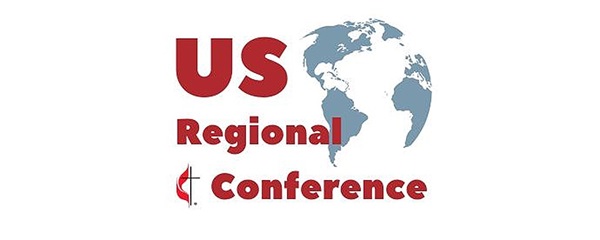The Connectional Table approved sending legislation to General Conference 2020 that will create a new structure for churches in the United States, called a regional conference.
Your support of The General Administration Fund apportionment implements trustworthy administrative oversight through the Connectional Table meetings.
The proposed legislation stipulates that the U.S. Regional Conference will have geographic boundaries congruent with the territory of the U.S. annual conferences. Jurisdictions will continue to function with their current powers and duties, including their process to elect bishops.
“The current proposal will help the General Conference to focus its work on matters truly global,” says Bishop Christian Alsted, chair of the board, “and offers the church in the United States a connectional structure to deal with matters pertaining specifically to the U.S. context, including the development of strategies and priorities, pension and healthcare issues and, not least, adaptations to the Book of Discipline.”
Creating the U.S. Regional Conference will be done in two stages:
- Stage I will form a committee of the General Conference, with legislative function, to deal with U.S. Region – Adaptable disciplinary provisions, U.S.-related resolutions, and non-disciplinary petitions concerning U.S. matters.
- Stage II will form the U.S. Regional Conference, and the Stage I committee will end its work.
Because the regional conference is a new body and different than a central conference, the proposed legislation will add a new ¶ 11. Article IV.—“There shall be a regional conference for the Church in the United States of America, with such powers, duties, privileges, and limitations as are hereinafter set forth.” Also, a new Section VI. Regional Conferences in the Constitution would be added.
Proposals for the U.S. to have a structure similar to a Central Conference began as early as 1924, with a formal proposal by the Board of Foreign Missions coming to General Conference in 1928. The Connectional Table began work on this issue in 2005, when a joint task force on the Global Nature of the Church was established with the Council of Bishops.
When the work on the General Book of Discipline began at General Conference 2012, the need for the churches in the U.S. to have a place to do adaptable work took on a greater sense of urgency. The Connectional Table began working alongside the Standing Committee on Central Conference Matters in 2013, when it formed a Worldwide Nature Collaboration Group.
As the global church responds to the recent 2019 Special Session, new legislative proposals for a U.S. structure have been brought forth. None pre-date the Connectional Table’s work or have the same focus.
“The legislation, as currently written, will not address our impasse over human sexuality,” says the Rev. Kennetha J. Bigham-Tsai, chief connectional ministries officer for the Connectional Table. “However, it will help unburden the General Conference and facilitate U.S. adaptable work of other kinds. It is crucially important for the health of our church going forward to have a place where the U.S. can make decisions about its mission and ministry.”
excerpt from a news release by Emily Clemons, Director of Communications
One of seven apportioned giving opportunities of The United Methodist Church, the General Administration Fund implements trustworthy administrative oversight, supports the legislative processes of the church and curates The United Methodist Church’s rich history. Please encourage your leaders and congregations to support the General Administration Fund apportionment at 100 percent.





